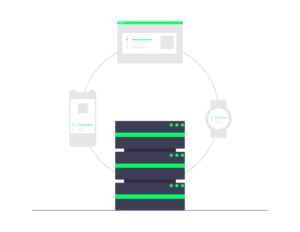About ALLEGRO ‘Agile ultra low energy secure networks’
 ALLEGRO aims at designing and validating a novel end-to-end sliceable, reliable, and secure architecture for next-generation optical networks, achieving high transmission/switching capacity
ALLEGRO aims at designing and validating a novel end-to-end sliceable, reliable, and secure architecture for next-generation optical networks, achieving high transmission/switching capacity
- with 10 Tb/s for optoelectronic devices and 1 Pbt/s for optical fiber systems
- low power consumption/cost
- with > 25% savings
- and secure infrastructures and data transfers.
The architecture relies on key enabling innovations:
- smart, coherent transceivers exploiting multi-band & multi-fiber technologies for P2P and P2MP applications, based on e.g., high-speed plasmonic modulators/photodetectors and programmable silicon photonic integrated waveguide meshes;
- loss-less, energy-efficient transparent photonic integrated optical switches, eliminating OEO conversions, e.g., with on-chip amplification in the O-band for datacom applications;
- a consistent approach to security, in terms of functional/ protocol architectures and communications, further improving QKD systems, enabling optical channel co-existence and researching on quantum-resistant (post-quantum) cryptography, developing systems based on physically unclonable functions; and
- a scalable AI/ML assisted control and orchestration system, responsible for autonomous networking, dynamic and constrained service provisioning, function placement and resource allocation, leveraging devices increasing programmability and overall network softwarization.
To achieve the target objectives and KPIs, ALLEGRO has defined a clear methodology ending in ambitious demonstrators. The consortium includes a good balance of industry and research/academia with know-how in complementary fields.
The results of ALLEGRO will be disseminated in leading conferences, events, and high-impact journals. They will have a concrete and measurable economic and social impact, contributing towards achieving key European objectives, reinforcing European leadership and digital sovereignty in the ongoing digital and green transition.
Project News
New Publication in Journal of Optical Communications and Networking
We are delighted to announce the publication of our invited article:“Optical switching for data centers and advanced computing systems [Invited]”Authored by Giannis Patronas; Nikos Terzenidis; Prethvi Kashinkunti; Eitan Zahavi; Dimitris Syrivelis; Louis Capps;...
New Publication at SPIE Photonics West 2025
We are pleased to highlight the release of our latest work: “Optical switching for AI computing systems”Authors: Paraskevas Bakopoulos; G. Patronas; N. Terzenidis; P. Kashinkunti; E. Zahavi; D. Syrivelis; L. Capps; Z-A Wertheimer; N. Argyris; A. Fevgas; C. Thompson;...
New Journal Publication Future Generation Computer Systems: Designing optimal Quantum Key Distribution Networks based on Time-Division Multiplexing of QKD transceivers: qTDM-QKDN
Authors: Juan Carlos Hernández-Hernández, David Larrabeiti, María Calderón, Ignacio Soto, Bruno Cimoli, Hui Liu, Idelfonso Tafur MonroyJournal: Future Generation Computer Systems, Vol. 164, 2025, Article 107557, ISSN 0167-739X. DOI: 10.1016/j.future.2024.107557 🔍...
New Publication IEEE JSAC (May 2025): Synergizing Hyper-Accelerated Power Optimization and Wavelength-Dependent QoT-Aware Cross-Layer Design in Next-Generation Multi-Band EONs
Authors: Farhad Arpanaei, Mahdi Ranjbar Zefreh, Yanchao Jiang, Pierluigi Poggiolini, Kimia Ghodsifar, Hamzeh Beyranvand, Carlos Natalino, Paolo Monti, Antonio Napoli, José M. Rivas-Moscoso, Óscar González de Dios, Juan P. Fernández-Palacios, Octavia A. Dobre, José...
New Publication OFC 2025: A UK Nationwide Heterogeneous Quantum Network
Authors: R. Yang, A. Wonfor, V. Jain, E. Fazel, M. Clark, R. D. Oliveira, S. Bahrani, A. Mehrpooya, A. Olianezhad, M. Alhussein, S. Joshi, J. Rarity, R. Penty, R. Wang, and D. SimeonidouConference: Optical Fiber Communication Conference (OFC) 2025 – Post-deadline...
New Publication OFC 2025 Demonstration of A Digital Twin for An Entanglement-Based Quantum Network
Authors: M. Yang, R. Wang, M.J.H. Clark, J. Tan, J.Y. Tai, R. Balram, S. Jiang, S.K. Joshi, D. SimeonidouConference: Optical Fiber Communication Conference (OFC 2025) 🔗 Paper Access:https://opg.optica.org/abstract.cfm?uri=OFC-2025-M4E.3 This research presents a...
New Publication – Performance Evaluation of a Light-Tree P2MP Metro-Core Architecture in Correlated Traffic Scenarios
We are excited to share our publication titled “Performance Evaluation of a Light-Tree Point-to-Multipoint Metro-Core Architecture in Correlated Traffic Scenarios”, presented at ONDM 2025.This work investigates how a light-tree P2MP architecture (using coherent P2MP...
New Conference Paper: Model Predictive Control Scheduling for Extended Access Metro P2MP Optical Networks
We are pleased to share our latest contribution:“Model Predictive Control Scheduling for Extended Access Metro P2MP Optical Networks”, presented at ICTON 2025.This paper introduces a scheduling framework based on model predictive control (MPC), targeting...
New Conference Paper: Direct Intensity & Phase Modulation for QKD Transmitter via Optical Injection Locking
We are excited to announce our latest publication: “Direct Intensity and Phase Modulation for QKD Transmitter via Optical Injection Locking”, presented at Europe-EQEC 2025.This work presents a transmitter design that directly implements both intensity and phase...
New Publication: Enhancing VCSEL-based BVT Performance Using Optical SSB Filter & Time-Delay Neural Network
We are proud to announce our latest contribution: “Performance Improvement of Directly Modulated VCSEL-based BVT via Optical SSB Filter and Time-Delay Neural Network”, presented at IEEE ICMLCN 2025.In this work we demonstrate how a broadcast-and-select transmitter...
